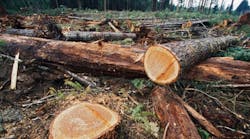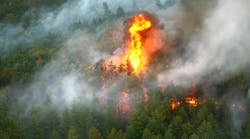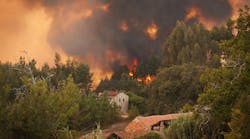What are the beliefs you have about mankind’s influence on and treatment of the environment? What state is our world in?
These questions are stimulated by a reading of Bjorn Lomborg’s book The Skeptical Environmentalist, recommended by Steve Cieslewicz.
So how did you answer the lead-in questions? Is your understanding that our environment is steadily deteriorating? Could your view be summed up as we are slowly but surely headed for hell in a handbasket? Is your understanding that given the ever-growing population we will have fewer resources and ever-decreasing amounts to eat; that the air and water are increasingly polluted; that forests are disappearing and we are losing 40,000 species a year; fish stocks have collapsed; top soil is being paved over or blown into rivers because of modern farming practices?
If that’s the case, I can’t blame you. How did your university curriculum inform you? What do you hear from school teachers and your kids? What do television and newspapers tell you? What do environmental groups soliciting funds or demonstrating tell you?
Lomborg’s main point is that there is a constantly repeated litany of environmental degradation. This makes us scared and more likely to spend our resources solving phantom problems instead of prioritizing based on facts and judiciously applying our limited resources where they will do the most good. So let’s look at the facts that he presents.
Back in the ‘70s when I was in university it was believed that the greatest challenge going forward would be feeding the world. The population was expected to hit 16 billion by 2000.
Overpopulation
Are you of the view that man’s increasing population threatens our very survival as a species?
Is the world population increasing? Sure but by declining amounts. In 1964 the population was increasing at 2.17% per year; in 2000 it was 1.26% and it’s expected to be 1% in 2016. The absolute number of people added per year peaked in 1990 and has been dropping ever since.
The world population did rather explode in the 20th century. As one UN consultant put it “It’s not that people suddenly started breeding like rabbits; it’s just that they stopped dying like flies.” Should we wish this were otherwise?
Life expectancy
In the early 1900s, life expectancy in the developing world was well under 30 years. By 1950 it had reached 41 and by 1998, 65. The numbers have been greatly bolstered by the dramatic fall in infant mortality, first observed in the developed world. Sweden, which was the first country to track infant mortality, has seen infant mortality fall more than 50-fold over the last 200 years.
Poverty
Poverty has fallen more in the last 50 years than in the preceding 500 years. The greatest improvement is in the developing world where real per capita income has tripled since 1950.
Food/hunger
The litany claims more people than ever are starving. Absolute numbers are used without putting food availability in the context of population increase.
UN statistics show in 1970, 35% of the developing world was starving. In 1996 that percentage had dropped to 18% and the projection for 2010 was 12%.
Agricultural production has more than doubled since 1961. Indeed, according to the UN we produce 23% more food per capita than we did in 1961. Most remarkably in developing countries food production has risen 52% per capita.
Forests
We’ve lost more than 2/3rd of the world’s forests and deforestation continues at unprecedented rates, right?
Actually, globally the area covered by forest has not changed much since 1950. Further, researchers estimate we have lost 20% of the original forest cover since the advent of agriculture.
Access to drinking water
The environmental litany suggests access to drinking water is a growing problem due to major population increases in the developing world.
The real facts are that access to drinking water in the developing world increased from 30% in 1970 to 80% in 2000.
While I have several more topic areas to cover, I recognize you likely have other time demands. I will return to this “state of our environment” next month and we will revisit how this all relates to vegetation management.


